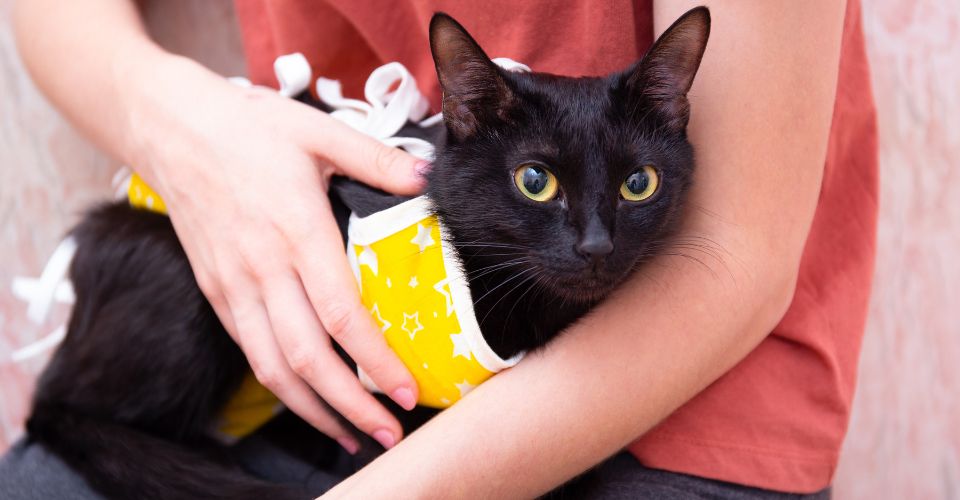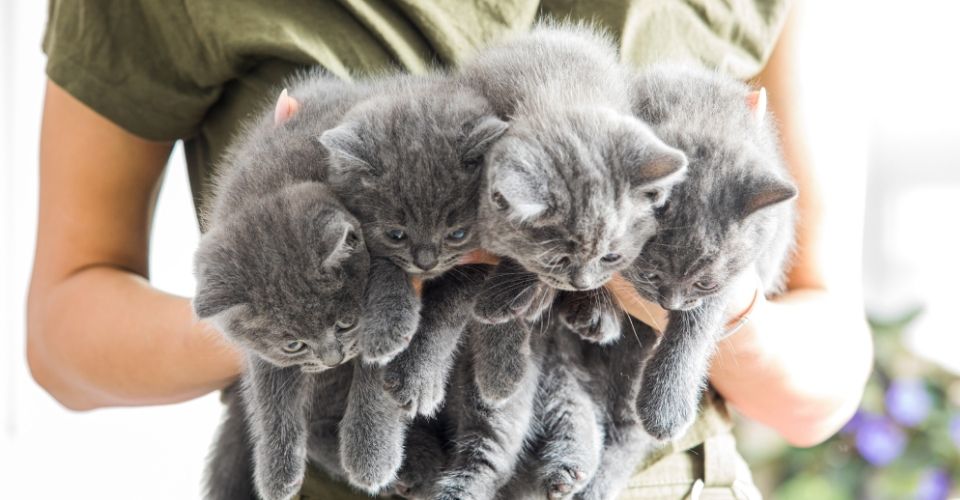Lucy: Oh my gosh, Leo! Look at those poor cats outside.
Leo: Jeez, Lucy! It is freaking cold outside, it is snowing. Are not they feeling it?
Lucy: I do not know. Thank God we are pets! We have a warm home and a caring human!
Leo: But what about our stray fellas? It is hard for them to find such comfort that we have. How do outdoor cats survive cold weather?
Well, Lucy and Leo need not worry for their mates – cats from cold regions are evolved to survive harsh winters. They have seen extreme weather conditions for thousands of years, yet they have successfully managed to make it into this era. That said, many cat lovers get really worried when they spot a stray cat on the street covered with snow, and they just cannot stop thinking: can cats survive in the cold? How do outdoor cats survive cold winter?
We are here to explain how stray cats survive cold winter and how can you help keep outdoor cats warm in winters.
How Do Outdoor Cats Survive the Harsh Winter?

To reach the answer with clarity, we need to know the basic, natural feline requirements in extreme weather, i.e., the temperature range cats can endure and the length of time they can be exposed to harmful weather.
As far as temperature is concerned, experts say that most felines can easily tolerate temperatures falling between 45° and 102° Fahrenheit. Though several factors such as age, breed, coat type, and health status can alter this range for a cat, any temperature below 45° F can put the survival of most cats at risk.
As far as the duration of exposure to cold is concerned, there is no clear-cut answer because it mainly depends upon the energy cats have. If a cat has more calories to burn, it can maintain its body temperature and survive cold for longer. Similarly, if a cat were running low on calories, it would be hard for her to survive cold for longer. Other than that, the coat type and familiarity of a cat with the neighborhood also play a decisive role.
For instance, long-haired cats like Norwegian Forest Cats, Maine Coons, etc., are better able to keep themselves warm during cold weather. Generally, cats can survive for no more than three to four days in extreme weather conditions.
Coming to the question after having clarified the basic feline nature, cats strive to keep themselves warm in cold weather by looking for shelter. Cats are adept shelter locators and can make a weather-protective item out of anything. For instance, they go under the car hoods, garages, sheds, or even go close to other cats to get a share of their warmth.
Once a shelter is found, kitties curl up their bodies to retain their heat. However, the neighborhood may make it easy for some cats to find shelter. For example, barn cats can easily find a good spot somewhere in a bunch of hay flakes or even near other, big animals like large horses to get the benefit of their body heat.
Check the Hood Before Starting Your Car in Winters!
In winters, cats usually sneak into the car hoods, which are warm due to the engine heat. Though it can be a perfect shelter spot for them, cats can risk themselves getting injured by trapping in various belts as the engine starts. Therefore, car owners are advised to make sure no feline pal is napping under the car hood when they start their cars in cold weather. You can open and close the hood before starting the car.
A proper diet also helps kitties keep their warmth. As mentioned earlier, food ensures the energy supply, which keeps the body temperature in check. Nonetheless, since cats’ prey may also keep themselves in shelters, it may become a tough job for them to find enough food during winters.
How Does Cold Weather Affect Outdoor Cats?
Cats are, unfortunately, prone to the following conditions when exposed to severe cold weather:
Frostbite in Cats
It happens when the skin and other tissues are hit hard by the cold environment. When the temperature drops below the freezing point, the blood vessels near the skin constrict in an attempt to divert the blood flow to maintain its temperature. When constricted for a long time, the tissues in the extremities (paws, ears, and tail) can face severe injuries. Discoloration of the affected area is usually the first symptom of frostbite in cats.
Hypothermia in Cats
Upon exposure to the extreme cold weather, for longer durations, the body temperature of cats begins to lower, especially if they are wet. Cats start showing symptoms of hypothermia (slowed heart rate and breathing) as soon as their body temperature drops below 100° F. As it keeps dropping, it keeps getting worse, leading to coma and even death if they don’t receive immediate warmth and care.
How Can You Help Outdoor Cats in Cold Weather?

You can lend a helping hand to kitties like those for whom Lucy and Leo have soft hearts. And if you are up to that mission, know that mother nature is also by your side: it is common for stray kitties to seek assistance in saving themselves from harsh weather conditions.
Here is what you can do:
1. Provide a Safe And Warm Winter Cat House
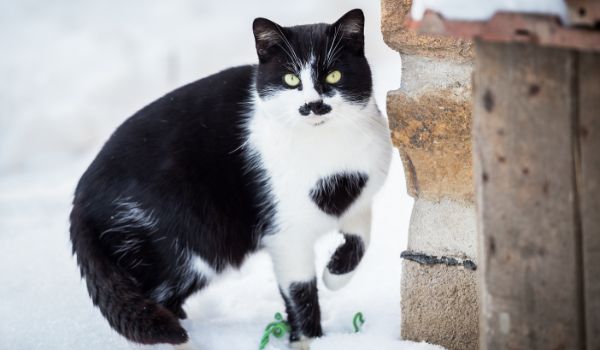
The shelter is what cats seek on a priority basis when it comes to surviving harsh weather conditions because of the warmth it offers. Though cats can do it on their own, you can help them by providing either ready-made or DIY shelter.

|
It is a large, water-resistant shelter that can accommodate more than one cat at a time. |
To make a DIY outdoor cat house for winter, do the followings:
- Take a wooden box large enough to accommodate up to five cats of average size and cut a 6 X 6 inches hole in it on one side.
- Put a transparent door lid on the hole to keep the inside safe from the chill air outside.
- Put warm fabrics on all walls to ensure insulation.
- Place some kind of heavy object such as brick in it to make sure it does not move in case of heavy winds.
- Place the shelter in a place where stray cats can approach easily. Keep in mind that it should be elevated up to three feet to keep predators from entering it.
Tip!
To make the shelter more appealing to stray cats, try putting catnip and cat treatsinside.
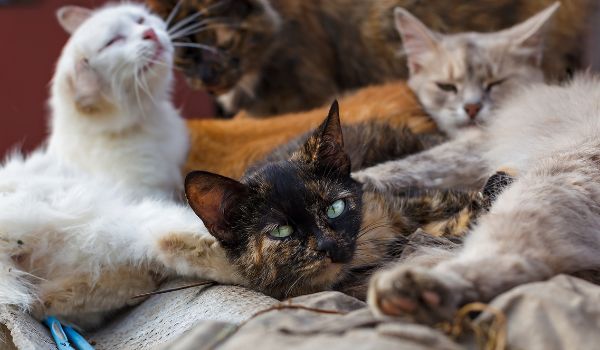
2. Give Food and Water
Stray cats have difficulty finding food and water in harsh winters because the rodents they eat usually hibernate or hide in warm places, and the water is frozen. In such a scenario, the easy-to-access edibles and drinkables are no less than a blessing for them.
You should strike a good balance between wet and dry food, keeping in mind the pros and cons of each. For instance, while the wet food is digested easily and saves calories from fighting the chilly winds, it is prone to freezing. Similarly, dry food does not freeze, but it also does not cater to the water requirements in the body.
For water, you would be mainly at the mercy of the temperature: if it is below freezing, you will have to play some tricks. For example, try putting the water container at a location where the sunshine is great. Thick plastic containers might also help. However, the real assistance comes from heating pads. Though they might consume some of your electricity units, they can effectively keep the water and even wet food containers warm and nice for our feline fellas out there.
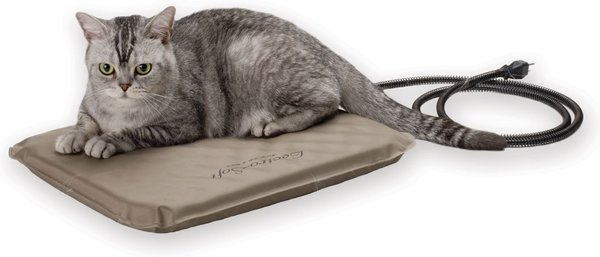
|
It stands up to the outdoor environment and dries quickly if any liquid falls on it. |
3. Trap, Neuter, and Leave
Though it is ethically debatable if one should practice neutering stray cats or not, neutered cats stay healthier overall and, therefore, can survive the cold environment better. This is where the trap, neuter, and leave – better known as Trap-Neuter-Return (TNR) – approach comes in. In this approach, stray cats are trapped, neutered, and returned to where they belong.
Nevertheless, note that TNR is a preventive method and needs to be done before severe winters set in. For neutering, the area around the genitals is shaved, which makes cats prone to feeling cold. If you still want to go for TNR in extreme winters, make sure that you provide appropriately warm shelter for them too. Moreover, you should never perform TNR on your own unless you are a professional.
Conclusion: How Do Outdoor Cats Survive Cold Winter?
So, let us put the discussion between Lucy and Leo to rest: cats survive the cold environment mainly by looking for a shelter. Breed type can also play a major role. For instance, cats with thick coats and high energy levels can survive cold weather for longer durations.
Cat lovers must strive to help their fellas during freezing moments. Providing shelter, food, and water can help them a lot.


